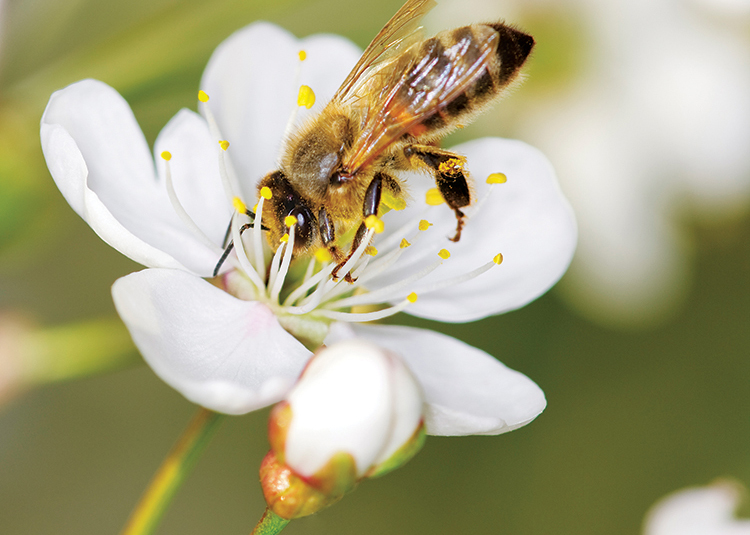Home > Farm > Environment > Oregon Farmers Strive to Bee Friendly
Oregon Farmers Strive to Bee Friendly
 In 2001, Mike Omeg, a cherry grower from The Dalles, planted native plants near one of his orchards to attract beneficial insects to help suppress black cherry aphid.
In 2001, Mike Omeg, a cherry grower from The Dalles, planted native plants near one of his orchards to attract beneficial insects to help suppress black cherry aphid.
The response was better than he had hoped.
“What I noticed at the orchard where we did this planting was that the fruit set on one of our cherry varieties, notorious for not setting many cherries, was much better. And as you got closer to the insectary planting, the fruit set got better,” he says.
“I thought, ‘Wow, that is interesting. There could be something here,’ ” he says. “That is when I started investigating the benefits of native bees for pollination of our crop.”
All the Buzz
Today, Omeg has established insectaries on 70 acres of his 335-acre cherry farm, which is now 100 years old.
“We have some pretty sizable hedgerow plantings and we have what we call pollinator islands, which are areas outside our orchards that are islands of plants that attract pollinators and beneficial insect species,” he says.
A few miles southwest of Omeg, in the Eagle Creek area, Brian and Rhoda Gibler of Captain Blueberry also are using insectaries to attract native pollinators to help set their fruit crop.
“The reason we started it is because we were in contact with the USDA’s Natural Resources Conservation Service to help us put in drip irrigation for eight acres of blueberries,” Rhoda says. “Then we found out that they have a program for native pollinators and they would help us establish an insectary. I thought, ‘Boy, that sounds like a good idea.’ So we took them up on it.”

Today, the Giblers have dedicated about an acre of their small farm to insectaries, and, they say, their crop has never looked better.
With beekeepers losing bees at an alarming rate in recent years – estimates put bee losses at between 25 and 40 percent annually – efforts by farmers like Omeg and the Giblers to attract pollinators are becoming more and more important, according to Mace Vaughan of the Xerces Society.
Bringing the Bee Back
Several factors are contributing to the dramatic bee population declines in recent years, according to scientists, including diseases, parasites, stress caused by moving bee hives long distances and land- management practices.
“When you see pretty extreme fence-row-to-fence-row farming, specifically in the Midwest, it shouldn’t be a surprise that we lose the abundance of diversity of bees in that landscape,” Vaughan says.
Vaughan notes that insectary plantings likely will never replace the need to bring in hives to pollinate certain crops, but, he says, “Long term, we are going to have to invest in farm practices that support the bees. And as farmers are looking to diversify their source of pollination and spread out their risk, I think these practices become more and more valuable, and there are more and more growers who are recognizing that this is an important tool for their toolbox.”
Omeg says he still relies on migratory honeybee hives to pollinate his crop but he has seen sizable benefits from his insectaries, both in increased cherry production and reduced pesticide use.
“I’m not trying to replace all pesticides,” he says, “and I’m not trying to replace honeybees. But what I am trying to do is complement the honeybees and pesticides by being able to reduce pest population by natural enemies to a level that is low enough that maybe instead of having to spray pesticide five times a year, I only need to spray three times a year. “That has a direct financial benefit,” he says, “but it also has benefits in areas like worker safety and the environment.”



